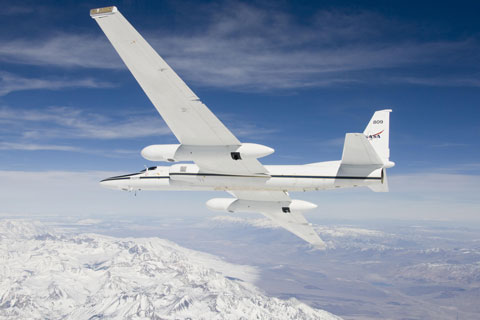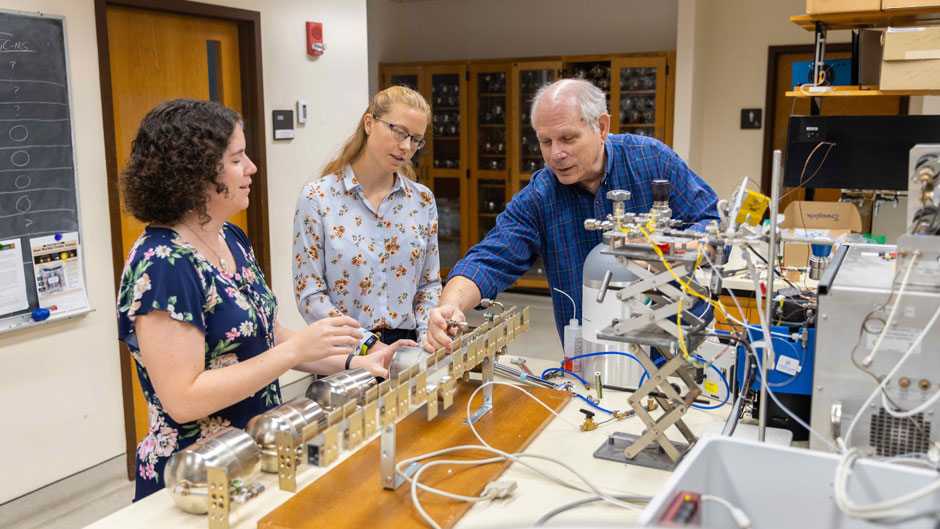Chlorofluorocarbons were the culprits more than three decades ago. Now, a new threat to Earth’s ozone layer could be looming.
Monstrous thunderstorms that develop over the U.S. Great Plains are lofting water, gases and other pollutants directly into the stratosphere, where they could potentially trigger depletion of the planet’s protective shield that absorbs nearly all of the sun’s harmful radiation.
More than 200 overshooting storms occur each day over the contiguous U.S., many of them in the high plains of the central United States, according to the Next Generation Weather Radar system.
“But we have very few direct measurements of what goes on in the stratosphere when these storms happen,” said Elliot Atlas, a professor at the University of Miami’s Rosenstiel School of Marine and Atmospheric Science.
An atmospheric chemist, Atlas is part of a NASA-funded project aimed at obtaining and analyzing those measurements.
Through the Dynamics and Chemistry of the Summer Stratosphere (DCOTSS) project, scientists will investigate how strong summertime convective storms over North America might impact the chemistry and radiative properties of the stratosphere.
Over the next two summers, a NASA ER-2 aircraft equipped with special instruments will fly out of Salina, Kansas, collecting the critical data researchers need to analyze the storms’ impacts.
With its elongated wingspan, the ER-2 looks more like an albatross than an airplane. But the single-engine jet, used back in the 1980s to take measurements of industrial chemicals that were depleting the ozone over Antarctica and the Arctic, is the right aircraft for the job.

A modified version of the United States Air Force U-2 spy plane, the ER-2 flies on the edge of space, reaching altitudes of up to 70,000 feet.

Pilots wear pressurized suits like those worn by astronauts to survive the extreme low pressures and freezing temperatures that exist at those altitudes.
“Our range of interest is from about 40,000 to 65,000 feet high,” said Atlas, who will travel with his research team to Salina for three eight-week deployments.
During a series of high-altitude flights, instruments mounted on the ER-2’s underbelly will suck in air samples, which will be brought back to the lab. There, Atlas and his research team will conduct tests on the samples, analyzing them for a wide range of industrial chemicals, solvents and other pollutants and natural gases that are relevant to ozone chemistry in the stratosphere.
Instruments mounted on the wings and in other locations of the ER-2 will take a range of other measurements as the aircraft flies downstream of overshooting convection.
From gases to the different types and composition of aerosols to isotopes of hydrogen and oxygen in water, measurements will run the gamut.
Data from NASA and National Oceanic and Atmospheric Administration (NOAA) satellites, conventional weather observations and forecast models, and ground-based meteorological radars will also be collected and analyzed.
Atlas is one of more than 20 researchers involved in the $30 million DCOTSS, which is part of NASA’s Earth Venture Suborbital research program. Kenneth Bowman, a professor in the Department of Atmospheric Sciences at Texas A&M University, is the lead investigator. Researchers from Harvard; MIT; NASA’s Ames, Armstrong, Goddard and Langley research centers; the National Center for Atmospheric Research; and the Universities of North Dakota and Oklahoma; and Texas A&M Corpus Christi are working on the project.
Two postdoctoral scientists, Katie Smith and Victoria Treadaway, will work with Atlas on sample collection, laboratory analysis and the publication of results.
No evidence exists yet that overshooting storms are contributing to ozone depletion. In fact, ever since the implementation in the late 1980s of the Montreal Protocol, a global agreement aimed at regulating the production and use of chemicals like chlorofluorocarbons that contribute to ozone destruction, atmospheric levels of ozone-depleting substances (ODS) have declined substantially, according to the EPA.
“Continued declines in ODS emissions are expected to result in a near complete recovery of the ozone layer near the middle of the 21st century,” the EPA reports.
Still, the potential threat to the ozone posed by overshooting storms is worth investigating since the chemical reactions initiated by these storms could possibly remove ozone, said Atlas.
“We’re living in an environment that’s getting warmer,” he said. “With warmer conditions, the atmosphere contains more moisture, and elevated water in the stratosphere is a potential catalyst to remove ozone. A warmer future could continually add more water to the stratosphere and initiate ozone losses over North America. This process is something we need to understand in much more detail."

